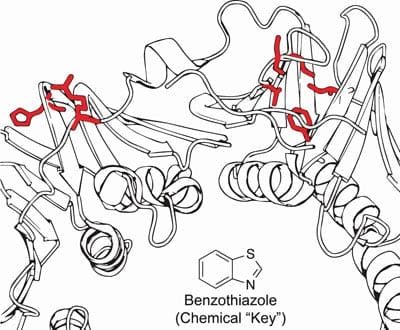
University of Florida horticulture scientist Manjul Dutt is hoping to turn your next margarita on its head by making it a lovely lavender instead of passé pale green.
Dutt and Jude Grosser from the UF Citrus Research and Education Center are developing genetically engineered limes containing some similar genetic factors that are expressed in grape skin and blood orange pulp. These modified Mexican limes have a protein that induces anthocyanin biosynthesis, the process that creates the “red” in red wine, and causes the limes to develop a range of colors in the pulp from dark purple to fuchsia.
“Anthocyanins are beneficial bioflavonoids that have numerous roles in human well-being,” Dutt explained. “Numerous pharmacological studies have implicated their intake to the prevention of a number of human health issues, such as obesity and diabetes.”
Anthocyanins also naturally occur in a variety of oranges called blood oranges, which has a red to maroon colored flesh and, some say, a better taste than Florida’s “blond” oranges. But blood oranges need cold temperatures to develop their trademark vibrant color. They grow and color well in the cooler climates of Spain and Italy, but do not exhibit the characteristic blood red color when grown in the subtropical climate of the Florida citrus belt.
These new limes were developed using genes isolated from the red grape “Ruby Seedless” and the Blood Orange “Moro.” Research on the utilization of these genes was conducted initially to develop a more consumer-friendly, alternative, plant-derived, system. They are the first step toward Florida farmers producing blood oranges and, possibly, a new grapefruit cultivar.
In addition to changing the color of the fruit, the introduction of anthocyanins also change the color of leaves stems and flowers, and could lead to the creation of ornamental citrus plants.
“Novel fruit, leaf, and flower colors could be produced by regulating anthocyanin biosynthesis,” Dutt said. “Flower color ranged from light pink to fuchsia.”
Read more: Purple limes and blood oranges could be next for Florida citrus
The Latest on: Anthocyanins
[google_news title=”” keyword=”Anthocyanins” num_posts=”10″ blurb_length=”0″ show_thumb=”left”]
via Google News
The Latest on: Anthocyanins
- Superfood Mulberries: Know THESE 5 benefits of Shahtooton April 29, 2024 at 7:59 pm
Mulberries, also known as shahtoot in India, are sweet and juicy fruits packed with nutrients and potential health benefits. These vibrant berries are gaining popularity for their unique flavour and ...
- 5 Fruits You Need to Eat Every Day to Not Gain Weighton April 29, 2024 at 4:58 pm
Blueberries In a BMJ study of more than 100,000 men and women, researchers discovered that subclasses of powerful antioxidants called flavonoids—namely flavonols, flavan-3-ols, anthocyanins, and ...
- The Easiest Way To Get More Longevity-Promoting Flavonols into Your Daily Dieton April 29, 2024 at 12:56 pm
A prospective cohort study by the National Health and Nutrition Examination Survey (NHANES) program, which collected data from nearly 12,000 adults, found that a higher intake of flavonols was ...
- Rhubarb grown in Far East for medical reasons; Brits, Americans made it a culinary dishon April 29, 2024 at 2:24 am
Rhubarb and Ohio weather - a perfect fit. The plants can be grown in a raised garden bed or an area that is removed from other plants.
- Are Superfoods the Ultimate Multivitamin Replacement? Expert Shares Their Health Benefits and Limitationson April 28, 2024 at 11:53 pm
Superfoods are nutrient-rich foods that offer a plethora of health benefits, making them a valuable addition to any diet. While they can complement a balanced diet, they shouldn't entirely replace ...
- 5 fruit-friendly facts for National Blueberry Pie Day: 'Healthy' and 'tasty'on April 28, 2024 at 7:00 am
Sunday, April 28, is "National Blueberry Pie Day" — helping to kick off pie-making season each year.Though it's unclear when this observation began, many find it a good excuse to enjoy a delicious ...
- Bring on the blueberrieson April 28, 2024 at 12:06 am
Various studies have found that blueberries may reduce obesity-induced inflammation, which could improve overall metabolic health.
- 4 Unhealthy And 8 Healthiest Canned Beans At The Storeon April 27, 2024 at 4:30 am
Adding beans to your diet can be an easy way to add a ton of nutrition to your meals, but some types of canned beans have a ton of sodium, sugar, and additives.
- 5 Healthy Coffee Additives to Tryon April 22, 2024 at 2:00 am
Plenty of healthy, sugar-free additives can boost the flavor and health benefits of your coffee, including cinnamon and cacao powder.
- Changing Crops' Colors Would Help Agricultural Robots Spot Them, Scientists Suggeston April 19, 2024 at 9:02 am
By making genetic alterations to wheat, maize, and other common crops, scientists can make them stand out to the robots tasked with taking care of them. This, they say, makes agricultural robots less ...
via Bing News











